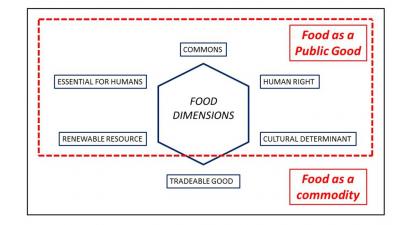
In the 2011 dystopian film In Time, Justin Timberlake works literally to earn his living, as the monthly currency is additional time for living. Billionaires can live for thousands of years, practically becoming immortals, while poor people struggle to survive every day, many of them failing in that endeavour. This science fiction film resembles painstakingly our real world, although instead of a time currency we have commoditised food. Today, the purchasing power of any given person determines how much and which type of food he can get access to – or physically produce it by own private means- as almost every single piece of food on Earth is already a private good. Or not?
Although cultivated food is a private food, several food-related elements are yet considered as commons, such as traditional agricultural knowledge accumulated after thousands of years of practices, agricultural knowledge produced by national research institutions, cooking recipes and national gastronomy, ocean fish stocks, wild fruits and animals, genetic resources for food and agriculture, food safety considerations and, more recently, maintaining food price stability and attaining global food security. Food and nutrition security should also be considered a Global Public Good (GPG), since it is neither rival nor excludable – unless we want starve somebody to death – but unfortunately food and nutrition security is yet an aspirational “situation”. But what about food itself?
Read the rest on the P2P Foundation blog
Go to the GEO front page

Add new comment